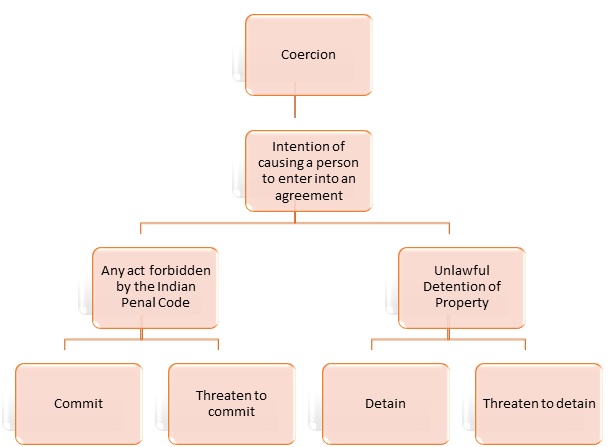LaWater: Some Aspects Of International Water Law
 |
| PC- https://www.worldwaterweek.org |
Pure water is the world’s first and
foremost medicine and the elixir of life.
More
than 70% of our earth’s surface is covered with water; more than 50% of our
body constitutes water; and most importantly, water is the basic necessity of
all mankind- these are some of the facts which we have been listening to and
experiencing right since our birth. Right from pure drinking and agriculture, to the water required for operating huge industries, it forms
an undeniably integral part of our lives. However, at the same time, water also
raises issues of concern and causes conflicts between states and countries. Due
to these reasons regulation of water has become of utmost importance. In this
regard, the provision of safe and adequate water to every person also needs to
be ensured. Taking into consideration these factors, let us see what measures
and steps have been taken globally for the protection, provision, and
sustainable use of water resources. For this, let us explore some of the
aspects of International Water Law.
INTRODUCING CONCEPTS OF INTERNATIONAL WATER LAW
If
we look at the globe, we see that there are quite a number of water bodies
which flow within one country, or through two or more countries. There are more
than two hundred and sixty international watercourses, about a hundred lakes, and numerous groundwater aquifers that are shared by two or more states. These
shared watercourses are known as ‘Trans
boundary waters’ (meaning any surface or groundwater which marks, crosses, or is located on the boundary between two or more states). States which share a
common watercourse are known as ‘riparian
states’. The existence of the international aspect of water law is considered
to be essential for achieving harmonious and peaceful management of these
shared water resources. [1]
CHALLENGES TO TRANS-BOUNDARY
WATER RESOURCE MANAGEMENT:
There
are a lot of challenges in the management and protection of Transboundary
water resources. Some of them are-
· Water
is a finite resource. The quantity of it is always the same.
· Water
as a necessary resource is unevenly distributed throughout the planet i.e.
between countries, regions, and even within the same country.
· It
is an overexploited resource and is heavily used in agriculture, energy
production, industry, and so on.
· Most
importantly water is a wasted, poorly managed, and untreated resource.
Adding to the above challenges nearly forty percent of the world’s
population depends upon the available two hundred and eighty trans-water
courses. It is very natural for each country to use these water resources for
their own benefits which may unknowingly harm the environment and hinder the
usage of water by the other country sharing the same water body. All these
problems and unresolved issues regarding the availability of water may act as a
source of tension and conflict between countries. [2]
Apart from surface watercourses, another important source of water is
groundwater. Groundwater is important for the planet’s freshwater supply and it
consists of thirty percent of the freshwater supply. Around 2.5 billion of the
world population depends on groundwater for their domestic needs. Groundwater
is contained in what are called ‘aquifers.’
But again there are major challenges in the management of groundwater-
· The knowledge about
groundwater: As groundwater cannot be seen directly,
it requires specialised knowledge for its management. One needs to know the
amount of water available and its quality.
· The problem of borders:
How does the groundwater flow, through which countries does it flow and what are
the countries that share the same groundwater aquifers- these are all
questions that need to be examined very carefully. For this one needs to study
the geological formations of these aquifers.
International Water Law is primarily concerned with how to best manage
this resource, minimize its waste, as well as to make provisions to resolve
such conflicts if at all they arise due to the mismanagement of water.
THE EMERGENCE OF VARIOUS INTERNATIONAL REGULATIONS IN THE FIELD OF WATER LAW
The first initiative to establish this field of law was undertaken by a
professional group called ‘The Institute
of International Water Law’ in 1961,
which focused on the principle of equitable and reasonable use of water.
Another
major contribution to the law was by the ‘Convention
on the Protection and Use of Trans-boundary Water Courses and International
Lakes’, 1992. [3]This
convention was originally recognized as a regional co-operation framework for
European countries but later amended to allow membership to any UN member
country. It was based on 3 fundamental principles-
· The
obligation to prevent and reduce trans-boundary impact.
· To
ensure equitable and reasonable use of water resources.
· To
ensure co-operation through common agreement and joint bodies.
This
convention enabled countries to create various trans-boundary agreements for the
cordial management of water resources and increased co-operation by introducing
certain guidelines for disaster management among others.
Later,
in the year 1997, the introduction
of the Convention on the Law of
Non-Navigational Uses of International Water Courses[4] constituted the first step
towards the codification of the principles of International Water Law. This
convention focused on the effective management of water and trans-boundary
watercourses. It also imposed various obligations on the state parties to the
convention- such as notifying the other state about any planned measure (whether
it is a dam, an irrigation station, or an industrial installation), preparing an
environmental impact assessment report (to keep a check on the project’s
ability to cause harm to the water body or its surrounding environment), providing
various dispute resolution mechanisms in case of any dispute between the
riparian states and its related rules and regulations. This convention was also
aimed at prevention, reduction, and management of any pollution of an
international watercourse. [5]
A
famous case in this regard is the case of Pulp
Mills on the Uruguay River between Uruguay and Argentina. As per the facts
of the case, Argentina filed a complaint against Uruguay in the ICJ
(International Court of Justice) opposing the construction of a mill on the
banks of Uruguay River which is shared by both the countries. The complaint
included 2 points-
1. The
breach of procedural obligations of the Uruguay River statute (the failure of
Uruguay to notify Argentina about the technicalities of the project).
2. Violation
of an obligation of substantive nature (carrying out an environmental impact
assessment study and the threat to the river because of the construction of the
mill).
ICJ
played a very important role in this case by setting a precedent for countries
regarding the rules that are to be followed while carrying out any construction
on the river.
A 1999 protocol on Health
and Water was also introduced that made reference to water
supply and access to sanitation services without endangering health or the
environment. [6]
Now
coming to the management of groundwater, the ILC (International Law Commission) has played an important role in
the working of the law on Trans-boundary aquifers. According to the Commission,
scholars have omitted an important global water resource from the list of water
resources. None of the above two conventions explicitly mention the groundwater
or its aquifers. As a result, the ILC adopted the 1994 resolution on confined
trans-boundary groundwater which enables the application of the principles of
the 1997 convention to trans-boundary groundwater. The resolution contained the
following –
· Codification
of principle of reasonable use and not to cause significant harm.
· Sovereignty
of states to use their part of trans-boundary aquifers but in accordance with the
International Water Law.
· The
protection of ecosystems which depend on aquifers or are within the aquifers
themselves
· To
establish joint mechanisms for their sustainable management.
Another
important aspect which contributes to the promotion and protection of
international watercourses are the Multilateral Environmental Agreements which
include various conventions on biological diversity, combating desertification
and increasing reforestation.
PREVENTION AND RESOLUTION
OF WATER RELATED DISPUTES
There
are two methods to prevent and solve any water-related disputes, namely-
diplomatic methods and judicial methods. Article
33 of the UN Charter provides
various means for international dispute settlements. [7] The same are applied in the
case of International Water Law. The diplomatic methods include negotiation,
good offices, mediation, conciliation, and facilitation where the decisions are
non-binding in nature. The judicial methods, on the other hand, include the
involvement of a judicial third party who is empowered to take binding decisions
for the parties. The ICJ has played a significant role in this regard. There
are also joint mechanisms/ basin organisations which have been established by
the riparian countries in dispute, to keep a check on the activities carried
out over the particular watercourse. The settlement provided by these joint
commissions is important as it is the predominant method of settling a dispute.
For example, in the dispute between India and Pakistan over the Indus River,
the dispute settlement provisions stated that before turning towards a
mediation or arbitration procedure, states must try to settle their differences
in good faith within the Indus Commission which was established for the
purpose.
CONCLUSION
This
article provides an overview of the provisions under International Water Law
for the protection and effective management of watercourses. Apart from the
legal provisions this law also focuses on the active participation of civil
societies and the public for the intended cause. One such example is the role
of an NGO named Green Cross
International, which played an extremely important role to promote the
benefits of various water-related conventions through seminars and workshops.
Water is recognized as a human right
by the committee on Economic, Social and
Cultural Rights. Right to water is also included in other Human Right
conventions such as the Elimination of
All Forms of Discrimination against Women, Convention on the Rights of Child, and so on. The elements which
constitute the right to water are availability, quality, and accessibility.
Therefore each and every state has an obligation to protect and guarantee access
to exercise the right to water.
By,
Sayali Mandlik
III B.A. LL.B.
ILS Law College
REFERENCES
· Boisson
de Chazournes, Laurence, Fresh Water
in International Law, Oxford University Press, 2013.
· https://www.unece.org/fileadmin/DAM/env/water/pdf/watercon.pdf
· https://legal.un.org/ilc/texts/instruments/english/conventions/8_3_1997.pdf
· http://www.icj-cij.org/files/case-related/135/135-20100420-JUD-01-00-EN.pdf
· https://www.un.org/en/charter-united-nations/
[1]
Laurence Boisson
de Chazournes, Fresh Water in International Law,( 1st ed.,
2013).
[2] Ibid
[3]Convention
On The Protection And Use Of Transboundary Watercourses And International Lakes, UNECE, available at: https://www.unece.org/fileadmin/DAM/env/water/pdf/watercon.pdf
[4]Convention
on the Law of the Non-navigational Uses of International Watercourses, International Law Commission, available
at: https://legal.un.org/ilc/texts/instruments/english/conventions/8_3_1997.pdf
[5] Available at: http://www.icj-cij.org/files/case-related/135/135-20100420-JUD-01-00-EN.pdf
[6]The
Water Convention and the Protocol on Water and Health, UNECE, available at: https://www.unece.org/env/water.html#:~:text=The%20Convention%20on%20the%20Protection,water%20resources%20by%20facilitating%20cooperation.
[7] Charter
of United Nations,
United Nations, available at: https://www.un.org/en/charter-united-nations/



Comments
Post a Comment